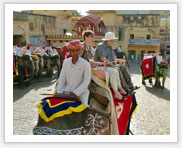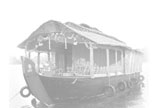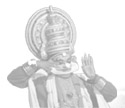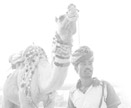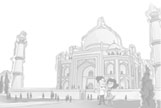
Visit Rajasthan to explore its charming cities like the Pink city - Jaipur, City of lakes - Udaipur, Sun city - Jaisalmer, Golden city Jaisalmer, Bikaner and many other enchanting cities.
Rajasthan City Guide
JAIPUR CITY TOUR
The Rose Pink city founded by Maharaja Jai Singh II (1693-1743), is the capital of Rajasthan. It is a major attraction for the first-time visitor. Jaipur, is surrounded on all sides by rugged hills, crowned with forts & enclosed by embattled walls. Houses with latticed windows line the streets with their rose pink colour lending enchantment to the scene which is almost magical at sunset. The Old City (Known as the Pink City) is a great place to wander around . The whole city was painted in Pink colour by Maharaja Man Singh II when Prince of Wales, later Edward VII, visited Jaipur in 1876. Today, every home with in the city is obliged by law to maintain his facade. The City is laid out in a grid pattern. It is a very well planned city and was designed by a Young Bengali , an engineer and scholar by the name "Vidyadhar Bhattacharya".
With its origin buried deep into the pages of history, the city still exudes a magical old world charm; an aroma of chivalry and romance is evident, despit having evolved into a city that is the hub of modern commercial activity in the region. Tell-tale signs of the glorious past and regal splendour of the city lie strewn across with gay abandon.

The colourful and intricately carved monuments are adequately matched by the lively spirit of fanfare, festivity and celebration of the people. Even today, one can find weather beaten faces with huge coloufrul trurbans, fierce moustaches and lips that spontaneouslya crease into a heart warming smile.
A city like Jaipur, where modernity and tradition live hand-in-hand, is truly rare. Perhaps this is what makes it an attractive destination for tourists who flock to Jaipur , year after year.
History of Jaipur
The historic city of Jaipur or "The City of Vicotory" was founded in 1727 A.D. by the great Kachhawah ruler Sawai Jai Singh II (1700 - 1747 A.D.), and named after him.
The monarch was not only a great builder, but also a poet and an astronomer.
Under his aegis, the city was designed by his talented architect Vidyadhar, who gave shape to the creative aspirations of Sawai Jai Singh in the form of the dream city of Jaipur.
The city is rectangular in shape and divided into nine blocks on the basis of principles laid down inthe"Shilpa Shastra", the ancient Indian treatise on architecture.
Built on the pattern of a grid, the city has wide straight avenues, roads, streets and lanes and uniform rows of shops on either side at the main bazar, all arranged in nine rectangular city sectors (Chokris).
The principal monuments of Jaipur are concentrated in the centrally situated Palace area (Chokri Sarhad ) in and around the city Palace. In course of time, the sunset-pink tinge of its walls, buildings and temples gave it the name Pinck City.
 Fairs & Festivals
Makar Sankranti
Fairs & Festivals
Makar Sankranti
The festival is celebrated on the 14th of January every year. This has now become the festival of kite-flying which does not spare the soaring spirits of anyone in Jaipur. The devoted ones, however, take a holy dip in the kund at Galtaji. The traditional sweet associated with it is Phirni, made in abundance by the halwais of Jaipur
Gangaur
tYoung girls and newly married women praying for their loved one or husband respectively, offer prayers to Goddess Parvati in spring (March-April). A colourful procession follows the silver and gold palanquins of Goddess Parvati brought out from the City Palace. Ghever, the traditional sweet associated with this festival is prepared all over the city.
Elephant Festival
This festival is held on the day of Holi, the festival of colours, at the Chaughan stadium. Beautifully decorated and caparisoned elephants assemble to participate in the royal procession. Elephant polo, elephant race,elephant tug-of-war with a few tourist and holi on elephant back are some of the exciting events.
Teej
To celebrate the advent of the monsoon, girls and young women dressed in colourful leharia sarees or costumes, sing songs and offer puja to goddess parvati, and pray for conjugal bliss and happiness. An elaborate procession comes out of the City Palace for two consecutive days. Villagers come to watch it in large numbers and buy knick-knacks from the stalls on the footpaths of the main bazars.
 Tourist Attractions of Jaipur
Tourist Attractions of Jaipur
Commonly referred to as the ‘land of kings’, Rajasthan boasts of plethora of attractions such as imposing forts and monuments, rich and varied wildlife, colourful fairs and festivals and much more.
Amer Fort Tour-
Jaipur The fort, its ramparts & watchtowers, overlooking the Delhi-Jaipur highway. It is believed to have been the capital of the "Minas", the original inhabitants of Rajasthan.
City Palace-
Nakkarkhana-ka-Darwaza, the imposing gateway of the City Palace guarded by stone elephants, is monumental.
Hawa Mahal-
A Pandora's box of wonders, the enchanting Hawa Mahal, the palace of winds, tier upon tier of curved arch surmounting fairy casements with "jali", lattice work screens.
Jaigarh Fort-
Built on a peak, overlooks the palace & city of Amber below.
Jal Mahal
Is Jaipur's lake palace. Surrounded with water.
Jantar Mantar
The architectural astronomical instruments of an 18th century Rajasthani king named Jai Singh contained in an amazing, three-storey-high complex known as Jantar Mantar.

